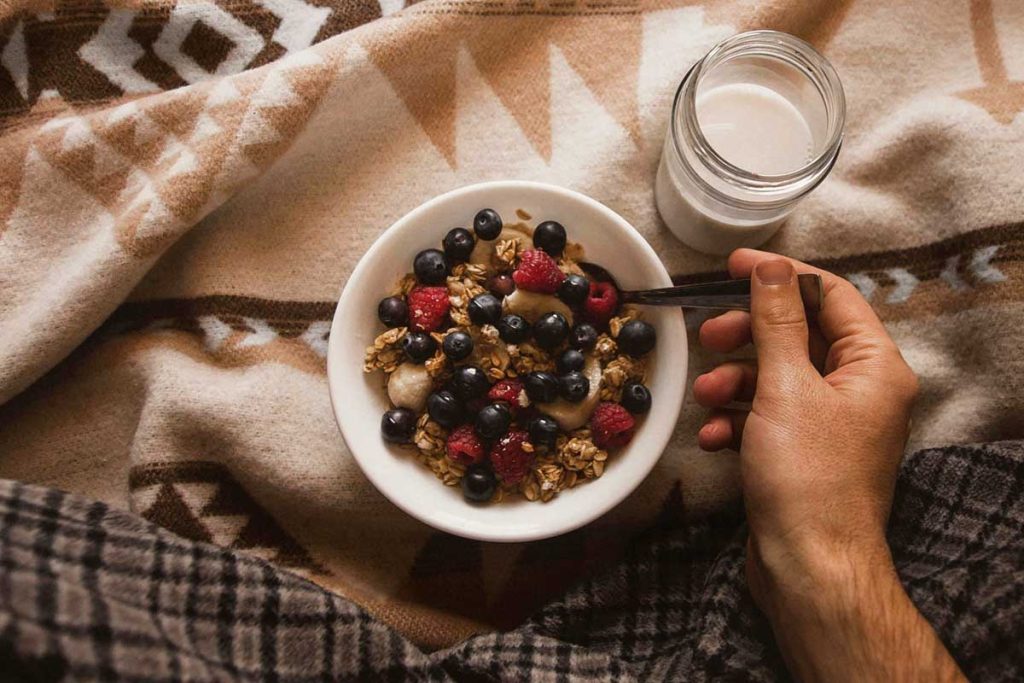
The passing of the seasons brings a shift in the weather—and our eating habits, too. Understanding how factors like light exposure, mood, and temperature drive our eating habits could explain some of our behaviors and may be key to unlocking alternatives to our not-so-healthy choices.
What’s light got to do with it?
Despite intuitive ideas about becoming more sedentary in the winter, recent studies have suggested exposure to UVB light increases appetite, and that mammals can actually have better metabolic health in the winter.
While the latest study in this area, published in the journal Cell Metabolism, was conducted on mice, the study’s authors argue that this concept may apply to humans, too.
“Further studies in humans may find that altering our exposure to artificial light at night or natural light exposure over the year could be used to improve our metabolic health,” says Juleen Zierath, professor at the University of Copenhagen’s Novo Nordisk Center for Basic Metabolism Research (CBMR) and senior author of the study, in a University news brief.
This knowledge may help to understand how light exposure impacts eating patterns, thereby helping to understand why some people gain more weight, or whether they gain more weight during a certain time of year.
When your mood dictates your food
SAD is often considered a wintertime malaise. And while it does typically manifest in autumn or winter, it can also, albeit less commonly, impact some people in spring and summer months.
The root cause of SAD is controversial: some scientists believe it relates to the amount of light we’re exposed to; others say our mood fluctuations are connected to a greater amount of time spent indoors and the loss of enjoyable outdoor activities.
Studies have shown that binge eating, restraint eating, emotional eating, and external eating ( eating prompted by the sight, smell, amount, and availability of food) were frequently observed in individuals with SAD symptoms.
Holiday eating habits
A pit stop at the holiday goodie table may impact more than just your immediate future. A 2023 study involving 49 normal-weight participants found that those given a high-fat/high-sugar snack daily for eight weeks became less interested in low-fat and low-sugar food. In fact, by eating those high-fact/high sugar foods, they rewired their brain to desire more highly palatable, energy-dense foods.
Addressing SAD
Start with a visit to a healthcare professional. Self-care strategies may include:
- getting outside for outdoor light exposure, especially if its within two hours of waking in the morning
- regular exercise
- developing a regular sleep routine
In the snack department, fermented foods may give your serotonin levels a lift. In addition, these tasty morsels may also soothe anxiety or depression:
- kimchi
- pickled onion
- kombucha
- kefir
Temperature spikes and plunges
Winter chill can drive us indoors. And during the balmy summer months, you’ll often find us joyously frolicking outside. But just how much do differences in temperature affect how much and where we eat?
One study performed in China found that a 1 C increase in temperature caused a 0.11 percent decrease in food intake. This study also found that women are more sensitive to the temperature in their food intake when compared with men.
The same study found that when the weather reaches extremes—either hot or cold—more people resort to ordering food online. For instance, in a temperature increase from 30 to 32 C among those studied, the incidence of ordering food online increased by 1.5 percent.
“No matter how high the mercury climbs or falls, we need to stay conscious of our movement and eating habits,” says Lena Bakovic, MS, RDN, with Top Nutrition Coaching.
“Remaining consistent with physical activity and dietary patterns year-round is of particular importance in helping to maximize one’s metabolic health,” says Bakovic.
In-season foods to boost your metabolism
No matter what time of year, Lena Bakovic with Top Nutrition Coaching recommends choosing a variety of fruits and vegetables equal to approximately half of one’s plate, selecting protein-containing foods to amount to a quarter of the plate, and then incorporating whole grain foods for the remaining quarter.
Fall Pumpkins are a fall superfood, offering fiber; potassium; vitamins A and E; and magnesium. Vitamin- and mineral-rich cruciferous veggies such as broccoli, cauliflower, and Brussels sprouts are also plentiful. Additionally, almonds—rich in nutrients including magnesium, vitamin E, and fiber—are a part of the fall harvest. Winter Fruits and vegetables that store well and can be made into soups and stews suit this season. These include apples (full of phytochemicals, mainly found in the skin); carrots (containing immunity supporting vitamins, minerals, and antioxidants); and potatoes (sources of vitamin C, iron, and carbohydrates). Ginger, often a complement in warm drinks and soups, may assist with blood glucose control. Spring The first crops in spring are fiber-laden rhubarb and asparagus, which are rich in antioxidants and contain vitamins A and K. Nutrient-dense cherries are also in season during this time. One recent study indicated that eating cherries can help reduce inflammation, exercise-induced muscle soreness, and loss of strength. Summer In July and August, fresh produce becomes abundant. Berries like blueberries, raspberries, strawberries—and the single-seeded berry, avocado—are brimming with antioxidants, which may help ward against cancer, heart disease, and dementia. Ripe fruits at this time also include fiber-rich plums and peaches, another source of vitamins A, C, and K. Vitamin A supports eye and skin health, while C and K are used by our bodies to heal wounds.
This article was originally published in the December 2024 issue of delicious living magazine.